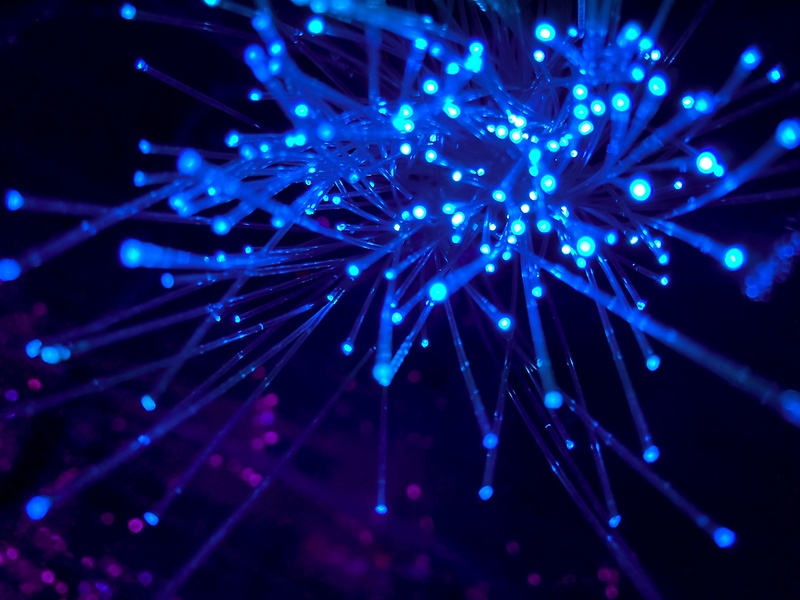29. May 2024 By Jannik Luhm
AI-generated visuals with Midjourney: What marketers need to know
With over 15 billion pieces of content generated by 2024, artificial intelligence impressively demonstrates how deeply it is already integrated into our digital world. The number of tasks that can be performed by AI is constantly growing. This means that AI will be increasingly integrated into everyday life in the future and will be indispensable as a work aid. One example of the use of AI in marketing is the generation of image material. Providers such as Midjourney, Adobe Firefly and Dall-E have long been integrated into everyday work. Every day, 34 million AI-generated images are produced. But what challenges do these generated images pose for us as advertisers and how can we utilise them? This blog post provides an initial overview of the current legal situation and the risks that can arise when using AI.
The legal framework in Germany
In Germany, there are currently no specific laws relating to the direct use of AI-generated images. However, it is assumed that AI alone cannot create independent copyright-protected works, as intellectual property is generally only attributed to humans.
Challenges and responsibilities
What problems can arise for us? Marketers using AI platforms should be aware of the possible copyrights to AI-generated content and ensure that they respect these rights. It is their responsibility to use the content appropriately. A key concern is the exclusivity of AI-generated images to avoid confusion and unwanted use by competitors. It is also important to respect and protect the rights of third parties, such as personal rights and trademark rights.
Copyright basics
To better understand these challenges and responsibilities, it is important to know the basics of copyright law. Copyright law protects intellectual products such as literature, art, music, films and software from unauthorised reproduction, distribution and use by third parties. Authors have the right to determine the use of their works themselves, which also includes the right to recognition of authorship and commercial exploitation. However, copyright protection is limited in time. After expiry, the works enter the public domain and can be used freely - in Germany this happens 70 years after the death of the author. However, there are certain exceptions and restrictions in copyright law, such as the right to quote or authorised private use, which allow copyright-protected works to be used without the author's consent under certain conditions. Copyright law also protects AI-generated content from unauthorised use, whereby authors have the right to determine the use of their works and to exploit them commercially.
AI and ancillary copyright
We will now focus on specific aspects: Can the output of an AI be protected by an ancillary copyright depending on the type and quality of the output generated? The question of whether a certain output is eligible for copyright protection cannot be answered in general terms. Ultimately, it is up to the courts to decide under which conditions a particular prompt is eligible for protection. For example, the use of well-known characters in AI-generated content through prompts can lead to copyright infringements, especially if characteristic features of the characters are adopted. It is often difficult for users to recognise whether AI-generated content contains copyright-protected elements. In the case of images, watermarks or signatures can provide clues, but these are not always reliable. In the case of texts, plagiarism software and special programmes can help to verify authenticity. When using AI-generated images, it is important to pay attention to the uniqueness of the images. Confusion and unwanted use by competitors should be avoided.
In the USA, a court has ruled that works of art created by an AI entirely without human intervention are not protected by copyright under American law. According to another judgement from the USA, the work must be manually altered and edited in order for copyright to be asserted for the image. The use of such images can also lead to problems in clarifying the rights of third parties, as AI images are often based on real templates and may have similarities to real people. Without precise knowledge of these similarities, legal clarification can be problematic, particularly with regard to personal rights. A prominent example of the violation of personal rights by AI-generated images is the Nike case, in which fake AI-generated images of prominent athletes allegedly wearing Nike products were used. These images were not part of Nike's official campaign, but were widely circulated on the internet. A prominent example of the violation of personal rights by AI-generated images concerns Barack Obama, of whom fake AI-generated videos were created showing him making statements that he never made. These videos were not authentic, but were widely circulated on the internet and caused considerable confusion.
Midjourney specific
Here's a little insight into the specific AI solution Midjourney. Midjourney is available in a free and a paid version. In the free version, images are offered under the CC BY-NC 4.0 licence, which may only be used for non-commercial purposes and provided the source is acknowledged. Midjourney states that all paid subscriptions may be used commercially up to an annual gross revenue of $1,000,000 without acknowledging the source. If revenue exceeds this limit, the Pro or Mega packages are required. For the use of images on a large scale, for example in advertising, merchandising or as part of saleable products, companies may require additional special licences if the standard licence is not sufficient. Midjourney reserves the following rights: If you use Midjourney, you authorise the company and anyone who subsequently takes over the rights to Midjourney to use your text and images that you have entered, as well as anything you create using the service, free of charge. You may distribute, display, perform and even sub-licence this content. This permission remains in place even if Midjourney is not used for any reason. As a premium user of Midjourney, you can control the visibility of your images. By default, the images are public and can therefore also appear in other prompts for other users. If you as a user do not want to share your pictures, you must specify this in the settings by setting your account to private.
There are various strategies for creating AI-generated images that are reminiscent of well-known content without causing legal problems. One option is to use parodies and satires, as these are often protected by copyright if they alter the original works in a humorous or critical way. Another method is the use of stylistic allusions. This involves creating images that imitate the style or visual theme of an original without using direct copies or specific copyrighted elements. A third strategy is the use of generic character types. This involves using generic archetypes or character designs that are reminiscent of well-known characters without adopting their specific characteristics, costumes or names. Finally, similar scenarios can be created that are reminiscent of the atmosphere or plot of an original, but change so many details that a clear distinction is possible. These approaches can be applied to series, films, celebrities and other copyrighted content to enable recognition without taking legal risks.
Conclusion
AI-generated content is a new technological development that enriches our daily tasks and creative processes. With platforms such as Midjourney, Adobe Firefly and Dall-E producing thousands of images every day, artificial intelligence is becoming more and more part of our everyday lives. However, this also raises important questions about the use and legal framework of these images.
As there are currently no specific laws in Germany that regulate the handling of AI-generated images, it is nevertheless important that users and operators are aware of possible copyrights and handle the generated content responsibly. This includes respecting the rights of third parties, such as the personal rights of depicted persons and brands, as well as maintaining the exclusivity of the images in order to avoid confusion and misuse.
Copyright law protects intellectual creations, but there is legal uncertainty with regard to AI-generated works that are created without human intervention. For marketing, this means that such AI-generated content may not be protected by copyright and is therefore more vulnerable to misuse and litigation. Marketers must take special care to ensure they have the necessary rights and permissions before using AI-generated images to minimise legal risks and ensure the integrity of their campaigns.
Specifically for Midjourney, the platform offers various licence models that allow commercial use up to certain revenue limits. Commercial use beyond this, especially on a larger scale, may require additional special licences. Users of Midjourney should therefore not only enjoy the creative freedom that AI offers them, but also keep an eye on their rights and obligations and adjust their data protection settings accordingly.
You can find more exciting topics from the world of adesso in our previous blog posts.
Also interesting:

